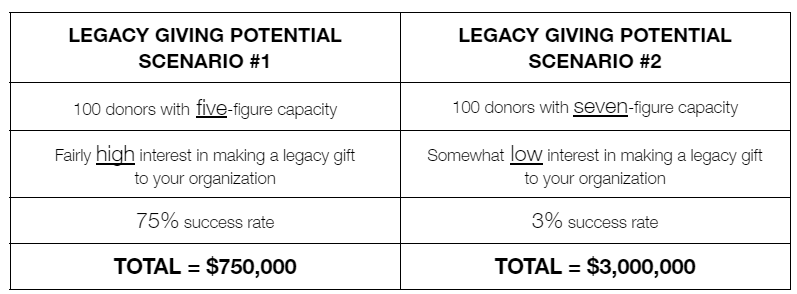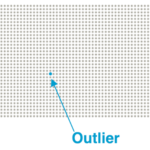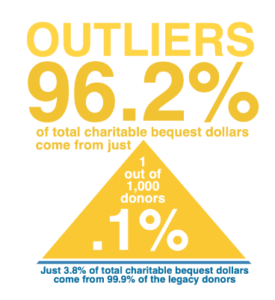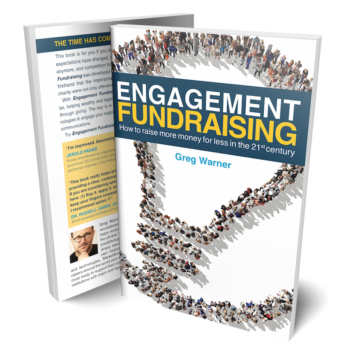We use cookies to ensure that we give you the best experience on our website. By continuing to use this site, you agree to our use of cookies in accordance with our Privacy Policy.
 Login
Login
Your Role
Challenges You Face
results
Learn
Resources
Company
Introducing the Most Effective Legacy Gift Fundraising Strategy You’ve Never Heard Before


Imagine the following two scenarios.
Scenario 1:
You have 100 donors who have capacity to give a five-figure legacy gift, and they have a fairly high interest in giving something.
Scenario 2:
You have another 100 donors who have capacity to give a seven-figure legacy gift, and they have a somewhat low interest in giving to your organization.
Which set of donors should you pursue? Which should you spend the most time working with?
Maybe this will help: according to Dr. Russell James, 75% of the donors in scenario 1 will end up making a gift, and only 3% of the donors in scenario 2 will make a gift.

Does that make it an easier decision?
Surely we should go after the donors who will give us a 75% success rate, right? Well… not so fast.
Consider this.
If 75 donors give $10,000 each, that adds up to $750,000. And if three donors give $1 million each, that adds up to $3 million: four times as much.

It’s hard to accept, because it feels great to win a gift three out of every four tries (or 75% of the time), and it doesn’t feel as good to win only one of every 33 (3%). In fact, you’ve got to have some serious patience and persistence for that. But the final dollar amounts speak for themselves.
What we’re talking about here is going fishing for planned giving outliers: the needles in your haystack.

According to Dr. Russell James in his book titled The Epic Fundraiser, if you want your nonprofit to get the most out of its legacy gift fundraising efforts, you want to place more emphasis on pursuing outliers – those extremely wealthy donors who have high giving capacity.
Let’s dig into that proclamation further. We’ll begin with his research.
In 2017, IRS data revealed that 2,902 estates filed what’s known as a charitable transfer. This matters because only estates with gross assets of $5.49 million or more are required to do this. That same year, 2,814,000 people in the US died. That means about one out of every 1,000 people died with great wealth.
Let’s check Dr. James’ math: 2,902 estates out of 2.814 million people. That’s just 0.1%, or one out of 1,000.
These are your outliers.
These people are capable of making very large charitable gifts — seven figures or more — from their estates when they die.

According to Dr. James, outliers make up 96.2% of total charitable bequest dollars.
It’s only a few thousand people each year, and many are unlikely to show up on wealth screenings. But win a planned gift from just one or a small handful of these people, and your nonprofit will grow by a large margin.
Meanwhile, on the other side of the spectrum, Dr. James says that most legacy donors give less than 10% of their estates to charity, and their gifts are rather small.
Sure, small legacy gifts add up. But the question is: how much time and effort (= money) can your organization afford to spend on generating them? And if you could become more effective and efficient, shouldn’t you try a better approach?
Check your organization’s data.
Even if your average legacy gift is $100,000, that’s likely because most of the gifts are small. Just one or a few outliers can easily warp the average.
And if you’re spending most of your money and time on generating tiny legacy gift opportunities, you’re probably spreading yourself and your budget too thin — especially if your team and budget are small.
Plus, with that approach, you’ll surely be very busy. You’ll be more likely to miss opportunities to uncover hidden outliers so you can build the kinds of relationships with them that will result in massive support for your cause.
So, should you only pursue big fish?
Sort of. But not really. Instead, you should do both at once. Don’t worry, it’s possible! Especially using the right technology.
Let’s think about your legacy gift fundraising strategy this way. Lots of people like to fish, right? But very few make a living winning fishing contests by reeling in the biggest fish. And very few of those folks win consistently, proving they aren’t just lucky.
What do consistent winners do differently?
For starters, they don’t try to haphazardly catch as many fish (legacy gifts) as possible with nets. Rather, they attempt to catch the biggest fish with a hook. That kind of focus is key to their success.
In other words, their strategic mindset is what drives their huge paydays.
In fact, Field and Stream magazine tallied lifetime winnings for the top 10 tournament bass fishermen and found that they ranged from $2.9 million to $6.8 million. Not bad, considering the vast majority of people who go fishing never earn a penny doing it.
Here’s how the winners succeed.
- They plan and strategize… A LOT!
- Then they prepare their tackle, boat, and crew with knowledge that supports their hyper-focused strategy. They ensure that their tackle is perfect. They tie their knots properly and make sure the drag settings on their reels are set right, so they don’t lose big fish while reeling them in.
- They use big bait to attract big fish. After all, big bait delivers more value to big fish. At the same time, small fish will move toward the big bait to satisfy their needs, too. And that’s just fine.
In other words, the most consistent winners begin by spending a lot of time and effort on strategy. Their strategy is designed to attract big fish first and foremost, with an understanding that it will appeal to the smaller ones too.
Similarly, I think organizational leaders and fundraisers concerned with legacy gift fundraising should spend more time on strategy and deflate (or forego) any indiscriminate approach that mostly emphasizes counting legacy gift commitments.
A volume approach will indeed help you raise money. It will generate activity for you. But it’s not optimal because it’s not cost-efficient. Plus, with that approach alone, you’ll be likely to overlook your outliers.
High volume is a vanity metric. Winners only consider it as one component of a comprehensive strategy.
So what are the steps to create this kind of strategy?
First, just like the fishing-contest winners, you’ve got to establish your mindset. This is important. Don’t skip this step!
You’ve got to make it so your legacy fundraising shop becomes perpetually focused on searching for outliers instead of just generating volume.
Next, you’ll need to cast a wide net to attract a bunch of supporters (dare I call them ‘fish’) with offers of substantial value (big bait, such as these 35 offers) so they lean in and move toward you.
Note that transactional, low-dollar solicitations are not on the list of valuable offers. Asks are not offers; they are annoyances that repel more than they attract.
As your big fish engage with your offers, you’ll want to employ the law of reciprocity to encourage them to provide information about themselves so you can begin the outlier qualification and prioritization process. They’ll supply that information if your bait is big enough (in other words, it provides enough value) because people are wired to return favors.
With the information they provide, you’ll be able to segment your supporters based on factors that affect who is most likely to give a very large planned gift. Those factors include age and/or number of children and a deep desire to find meaning, purpose and permanence in life through support of a cause or institution that intersects with their life story, community or values.
AGE and/or CHILDLESSNESS + DESIRE
Desire (a qualitative factor) increases as people age, especially if they have no children, and is more important than age or childlessness (quantitative components). But desire is especially hard to gauge without a personal relationship. However, once that’s been established, you can increase desire for legacy giving further among your supporters.
The right offers increase desire.
Begin by recognizing that everyone wants to be the hero of their own life story. Most also want to gain a sense of permanence so they feel like they will live on after their lifetime. As people grow older, their longing for permanence becomes amplified (especially if they have no children).
So, the trick to increase desire for legacy giving is to offer your supporters opportunities to learn how they can become a hero in their life story and attain permanence through planned giving.
As for children, people who are childless tend to give quite a bit more than people who have children. If you’re casting a net to get to know your supporters using donor discovery surveys (for example), you’ll uncover who has never had children. Plus you’ll collect tons of other donor discovery information directly from your supporters, including why they care, how much they care, where they reside in their consideration continuum, their true capacity (via interest in giving assets), their age, and more.
You can’t buy this kind of private, self-reported, qualitative information from wealth screening or big data-appending firms. But it’s exactly what you need in order to zero in on who is most likely to make a legacy gift decision in your favor (or has already done so), and who’s ready for outreach.
With a net like that, you’ll generate a lot of highly qualified leads and uncover a lot of hidden legacy gifts (the ones the donors haven’t told you about).
This is how you’ll generate volume initially.
But that’s not the entire strategy.
In fact, it’s just the beginning. You haven’t found your outliers yet!
Now, with the critical information you’ve collected, you can properly cultivate and steward those who lean in so you uncover the outliers among them.
That’s where things get super-interesting — and fun!
It’s through cultivation and stewardship that you build trust. Then, through engagement (one-to-one or from afar using traditional and digital communications channels) you’ll be more likely to learn a donor’s outlier status.
Knowing that they are in fact an outlier gives you a chance to do what you do best: further the relationship and facilitate their giving (especially as they age). Then you’ll finally realize the outcomes you originally sought when you developed your mindset and strategy.
Your perpetual focus on searching for outliers instead of just volume will finally pay off.
Think of it like a sieve.
This sieve approach is what MarketSmart recommends for our customers.
We tell them to avoid over-valuing the counting of legacy gift disclosures, and never consider a legacy society member a legacy gift donor (unless their gift is irrevocable).
Revocable gifts can be changed easily at any time. That’s why we tell our customers these folks are still just leads. Yet, outliers can be found among them. And most of these leads will make their final legacy giving decisions near the very end of their lives. That’s why stewardship is so important!
Dr. Russell James’ research backs this up.
He found that 80% of legacy gift dollars are given by people who sign charitable giving documents in their 80s, 90s, and even older — their final documents. In other words, many will have made their legacy giving decisions and documented them in previous iterations of their plans. Then, as their lives come to a close, they make their final decisions.
If you don’t build relationships with them and steward their disclosed gift intentions, they may change their minds. According to Dr. James, “Among 700 decedents who had confirmed the presence of a planned bequest gift to charity, 35% generated no estate gift. This lost gift rate varied from 17 to 60% across different organizations. The average loss rate was 24% when the charity had at least one communication with the decedent within two years of death, and 48% otherwise.”
That’s why using an Engagement Fundraising system that includes automated stewardship is so important. It helps organizations with limited budgets and busy staff help their supporters move themselves into the sieve. Then they can focus on building the kinds of relationships needed to encourage the outliers to move through the fine mesh.
Quick review.
Casting nets with big bait (valuable offers) attracts lots of fish — including the biggest outliers — so they move themselves into your marketing funnel.
Accompanying valuable offers with feedback loops helps to capture donor discovery information at low cost and at scale. You’ll need that information to properly cultivate and steward your leads so you build trusting relationships. Then you’ll finally get opportunities to facilitate planned giving.
Plus, you’ll hold onto more legacy gift commitments until each supporter’s final decision-making period arrives. It’s at the end of this protracted process that your planned gift donors (leads) finally become exponentially more likely to generate true revenue rather than false positives resulting from desertions.
As a result, your supporters will not only keep your organization in their estate plans; they’ll increase the amounts they leave as they eliminate other organizations that treated them poorly or forgot about them altogether.
It’s through this sieve process that you’ll be able to gain a sense for who the outliers really are. After all, big fish don’t jump into nets on their own. They know they’re targets, and they’ve learned to avoid people who want what they’ve got.
But they do move themselves into nets when lured with the right bait (value). That’s when they become easier to engage.
It all starts with the right strategic mindset focused on the desired end goal. That’s how you generate massive legacy gifts from outliers!

Delaying gratification.
I know. It’s a lengthy and sophisticated approach.
Most of your organization’s leaders and board members prefer easier, more traditional, more familiar approaches.
Your fundraising consultant won’t make this recommendation. It’s unlikely that they studied legacy gift fundraising like we have with Dr. Russell James.
Neither will your direct-response vendors (who need to sell you printing to keep their presses running). They want you to stick to the costly “spray and pray” approach that’s made them money for decades. It’s easy for them and easy for you, too.
Your leadership will be more attracted to “easy.”
Convenience is a powerful influencer. But it’s best suited for marketing involving low-dollar decisions.
So consider sending them this blog article, or emphasize these simple steps:
- Develop a mindset and strategy that focuses on attracting and reeling in outliers just like fishing champions do.
- Offer true value (bait) that attracts big fish into your net instead of providing trivial and transactional tools like free online wills, estate planning calculators, and similar items that are unlikely to appeal to the wealthy. They have advisors for that!
- Accompany valuable offers with feedback loops (surveys) to capture self-reported qualitative donor discovery data you can’t buy.
- Use the donor discovery data to cultivate and steward every lead with automation for years at low cost.
- Then be patient, polite, and resolute as you continue to build trustful relationships with the leads, first at arm’s length using automation, and then face to face.
- All the while, keep your eyes open for the outliers — those with massive capacity showing deep desire and interest in developing or altering their estate plan. Their survey data and online digital body language will reveal their interest in giving assets when the timing is right.
- Finally, do all you can to help them find meaning in their lives and permanence through giving to support your cause or institution. In other words, help them become the hero in their own life story.
MarketSmart can make it easy for you!
If you’ve got MarketSmart’s dashboard, you already know what I mean.
We do it all for you, so you just need to keep your eyes out for the outliers and build relationships with them. After all, isn’t that your favorite part of the job?
Learn more about how you can put this sieve approach to work for your organization with the right software and a team to deploy it for you — a team that makes it EASY.
Talk to one of our Solutionists today (with no sales pressure whatsoever). Arrange a purely educational demonstration today to see how so many other fundraisers like you have already achieved massive success.
Related Posts
- 7 big reasons why capacity is so hard to uncover (how the rich hide their wealth)
- Don’t survey your donors unless you have cultivation ready to go
- The 10 Commandments of Engagement Fundraising
- 8 Ways to Ask for a Donation Without Actually Asking
LIKE THIS POST? PLEASE SHARE IT! YOU CAN ALSO SIMPLY LEAVE YOUR THOUGHTS BELOW.
Get smarter with the SmartIdeas blog
Subscribe to our blog today and get actionable fundraising ideas delivered straight to your inbox!
